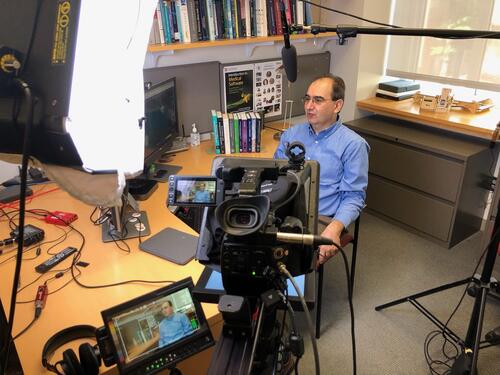
My co-authors and I were having our first meeting with Sara Epperson, Director of Digital Education [for the Poorvu Center], to discuss our proposal to record a Coursera online class based on our then-upcoming textbook “Introduction to Medical Software: Foundations for Digital Health, Devices, and Diagnostics.” Her opening question to us was “why do you want to record this class?” to which, to my surprise, I blurted out “I want to save the world!”
After a period of silence, I then tried to explain (to me as much to her) what I meant by that statement. How can a class (or a textbook) on medical software “save the world?”
There is a desperate need to both improve the quality of medical care and reduce the costs involved while at the same time helping to provide improved access to underserved populations that do not have it. In most universities, for example, including the one at which I teach, mental health services have been perennially overloaded with demand, especially during the pandemic. How does one improve access so that a student suffering from depression can get help before it is too late?
One answer is to create digital health solutions, or, to put it more simply, computer programs or apps that help improve care. These may range from helping to streamline existing processes, to enabling better and more timely communications, to providing additional resources, all the way to being actual therapeutic tools. One of the great things about software solutions is that they are easy to scale. While a therapist can only see one patient at a time (and only so many in a day before she collapses in exhaustion), computer programs know no such limits. We can easily design these to handle as many users as there is need and at all times of day and night.
The big challenge is how one begins to train people in this area. Medical software lies at the intersection of diverse fields such as medicine, law, business and management, computer science, and engineering (see also the attached video that explains the cover for the book.) Our contribution is this relatively brief volume that hopefully gives the reader a broad overview of the whole field including the regulatory and business aspects, the impact of the clinical environment and the actual procedures for designing, implementing, and testing medical software. We cover topics ranging from data privacy to quality management systems to risk management to machine learning to raising capital for a new venture.
Ultimately, the goal of teaching is not to simply transfer information, but to give students the necessary preparation so that they can embark on their own adventures where they will acquire true knowledge from experience. The best we can do is to create for you a map highlighting interesting places to visit and dangerous regions to avoid, as you try to make this world a better place.
— Excerpt from FifteenEightyFour, the blog of Cambridge University Press. Read the full post by Dr. Xenophon (Xenios) Papademetris, professor of Radiology & Biomedical Imaging, and Biomedical Engineering at Yale
Explore 80+ course offerings at Yale Online
